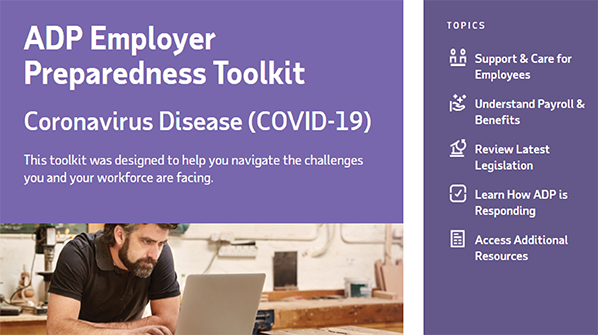For many reasons, increasing numbers of workers are working remotely. Managing these workers requires a different approach, especially if the remote worker is experiencing a sudden change due to an unexpected event. How can businesses keep productivity and engagement up with a remote workforce?
Play offense
- Set clear goals and expectations that maintain workers' productivity. Just because they are at home, the responsibilities are the same as if they were in a traditional office – other than maybe the dress code.
- Be creative in your approach to keeping workers engaged and part of the team. Without the proverbial water cooler, find different approaches to maintaining the team camaraderie and connection.
- Focus on the people. Everyone will perceive working from home differently and require different approaches from their manager. Not everyone will be happy about the change.
- Provide and communicate on-line learning opportunities for employees to grow and develop.
Telecommuting Management
- There is a learning curve for both the virtual worker and the manager leading a virtual team. It won't always work smoothly, especially at the beginning and this is okay. Acknowledge the challenge, ask for ways to lead better, learn and improve.
- Things that were easy in the office may pose hurdles with a distributed workforce. Is everyone's home equipped with the appropriate technology? Virtual meetings may require advanced planning to make sure that everything is working before the scheduled call.
- Leading virtual teams requires understanding. You must be tolerant of a ringing doorbell, barking dog, or kids making noise in the background. This doesn't mean you can't coach these issues, as your team member may be unaware of these distractions.
Be agile and engage your talent
Facilitate feedback
- Leverage real-time communication
- Offer daily virtual office hours for anyone having issues caused by working remotely
- Offer presentation and speaking skills training specific to remote communication tools. Working in front of a webcam and microphone can be very different than a PowerPoint presentation around a table.
Employee Engagement
- It's important for employees to stay connected with one another on a personal level. This is a great time to leverage your employee resource groups to encourage networking and collaboration. Encourage what works best for your culture, examples include a "coffee chat" over video or a virtual "pet happy hour."
Following these three guidelines can help you and your remote team members adjust to a new working environment while maintaining productivity and engagement. Together you can create a positive remote-working experience for both of you, whether the arrangement is temporary or long term.
This article originally appeared in Spark Powered by ADP.
Related articles:




